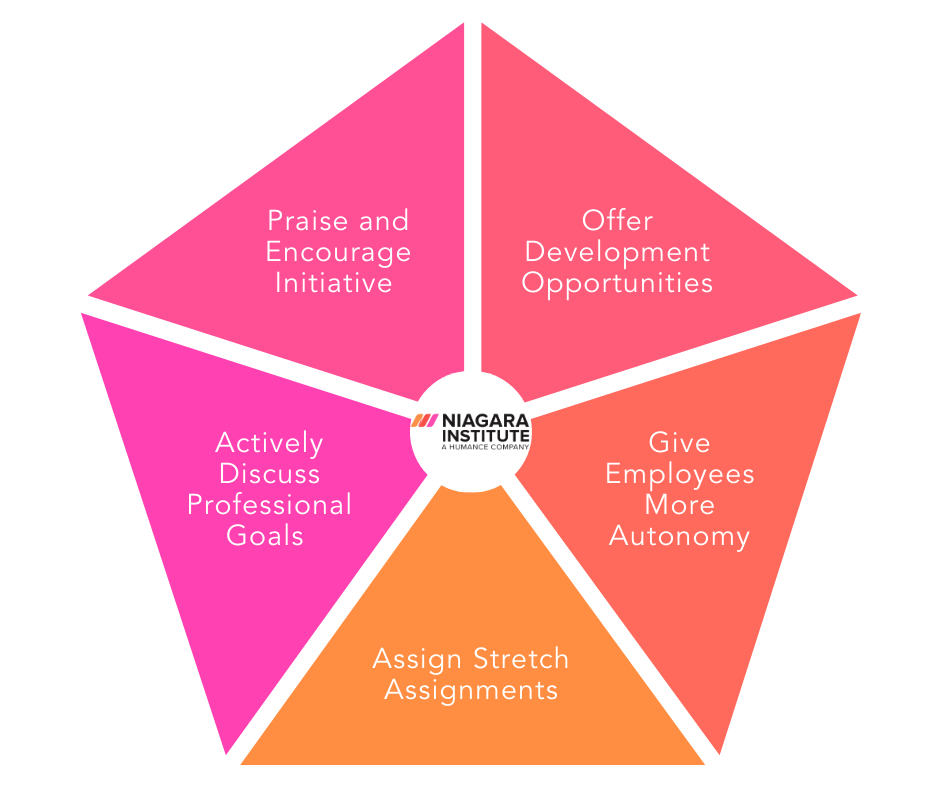8 min read
10 Things Your Direct Reports Really Want From You
With a team of unique individuals with different personalities, experiences, and preferences, it is hard to know what your direct reports want and...
4 min read
 Michelle Bennett
:
Mar 9, 2022 5:00:00 AM
Michelle Bennett
:
Mar 9, 2022 5:00:00 AM

Boredom at work, nicknamed boreout (a play off the term burnout), can happen to even the best employee. While there are countless articles claiming 50 things employees can do to help themselves beat boredom at work, sometimes what they really need is the support of their leader.
If you’re in a leadership position and fear an employee is either grappling with boredom at work, or at risk of becoming bored, then this is the article for you.
A number of studies have been done to determine the presence of boredom in the workplace, as well as the causes and consequences of it. Below we’ve highlighted some of the most relevant and eye-opening statistics to give you an idea of what you’re dealing with when it comes to boredom at work.
As a people leader, you need to be able to spot a bored employee, just as you would a burned-out employee. If you don’t and boredom goes unchecked, you may begin facing bigger problems like demotivation and turnover.
Fortunately, regular one-on-one meetings are the perfect opportunity to get a pulse check on your employees. Everything from their level of engagement to their body language to what is left unsaid can give you invaluable insight into where they are at and if action needs to be taken.
The following list contains common signs of boredom at work which should give you an idea of what to look out for. Of course, you should always follow up and ask probing questions during your one-on-one meeting to confirm if they are in fact bored at work, or if something else is going on.
It should also be noted that passing moments of boredom at work is normal and have even been scientifically proven to be a precursor for creative thinking. Rather, it is prolonged periods of boredom that you need to be on the lookout for, as that is when the risk of disengagement surges, and problems like a lack of attention, missed opportunities, and preventable mistakes occur.
While there are obviously actions your employees can take to prevent or cure their boredom at work, as their direct leader, there are things you can (and should!) do to help the cause. As Lotta Harju, an assistant professor of organizational behavior at EM Lyon Business School in France, notes, “Preventing boreout in employees can boil down to ‘plain old good leadership,’ whereby leaders take time to communicate to workers why what they’re doing is valued and valuable.”
In that spirit, here are six ways you can help employees who have shown signs of boredom or who you fear are teetering on the edge of it.

Offer Development Opportunities
In LinkedIn’s 2021 Workplace Learning Report, 70% of managers agreed that their direct reports who spend more time learning have higher employee satisfaction scores. Not to mention, employee development has been linked to higher retention, increased morale, improved productivity, and lower absenteeism. This is to say that if you want keep your employees from becoming detrimentally bored at work, offer them development opportunities, such as enrollment in a course or one-on-one coaching.
Give Employees More Autonomy
Autonomy, which refers to the independence and discretion an individual has in regards to how, when, and where they work, is another great way to stave off boredom. That’s because it has been found to boost motivation, proactive behavior, creativity, enthusiasm, and commitment.
Granted, you should first determine if your employee can in fact handle more autonomy. Ask yourself:
Assign Stretch Assignments
Much like giving an employee more autonomy, you need to determine an employee’s readiness and openness before giving them a stretch assignment. If you conclude that they are, you want to give them an assignment that “simultaneously offers them a chance to develop new skills while helping the organization solve a real business problem.” These assignments are an ideal boredom buster as they get an employee out of their comfort zone and challenge them to think and act differently than they typically would.
Actively Discuss Professional Goals
One way to avert employee boredom is to feed their sense of purpose, make their work feel valuable, and show care and interest in their professional goals. One way you can do this is by following the 10:10:10 template for one-on-ones. During the first 10 minutes, you build rapport. In the second, you review projects and answer questions. In the third and final 10 minutes, you discuss their professional goals and provide support to make those goals a reality. If follow this formula week after week, it will not only keep the bigger picture top of mind, but it will also motivate them to push forward even when their work seems mundane.
Praise and Encourage Initiative
When an employee takes initiative and gets personally invested in a task or project, they’re less likely to fall into the traps associated with boredom. As a leader, you should praise and encourage this type of behavior anytime you see it. Celebrating milestones along the way can further emphasize how much you value, appreciate, and reward initiative, making it clear to your team that such efforts are recognized and honored.
This approach not only fosters a proactive work environment but also reinforces the importance of taking initiative and being personally invested in one's work.

8 min read
With a team of unique individuals with different personalities, experiences, and preferences, it is hard to know what your direct reports want and...
.png)
7 min read
Did you know that 52% of voluntary resignations are avoidable? As the Gallup study that found this states, “People leave because of fixable issues.”...

5 min read
Have you noticed the get-up and go has got up and went for one or many of your employees? If so, you’re not alone. Many leaders across all industries...